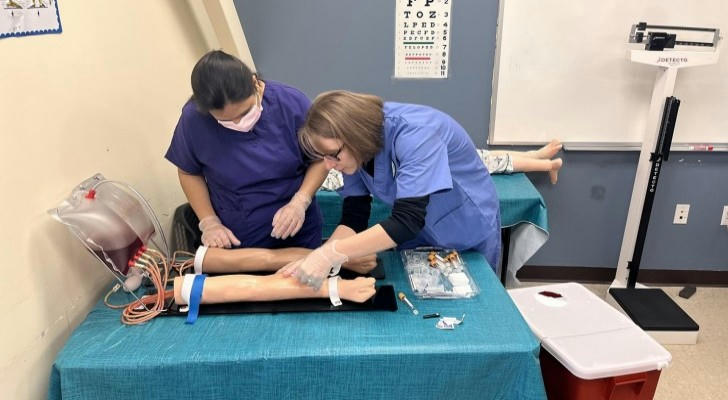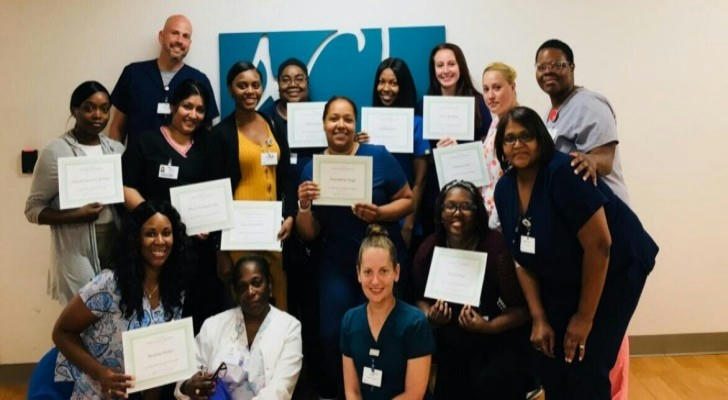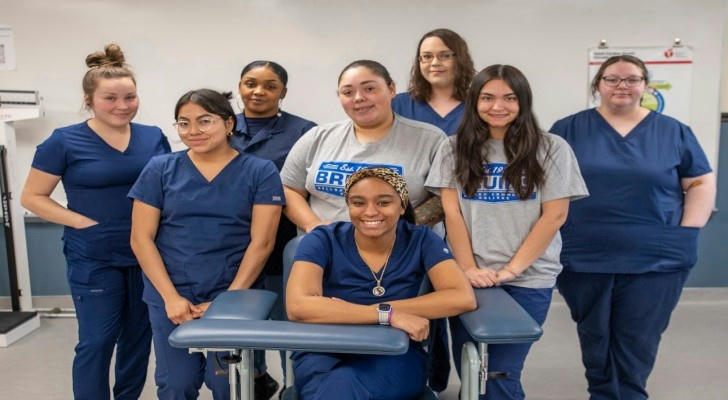🎓 Phlebotomist Training: A Simple Path to a Healthcare Career
Not every healthcare job requires years of school. For people who want a fast, practical way into the medical field, phlebotomist training is a strong starting point. It doesn’t take long to learn and can lead to real job opportunities in clinics, labs, and hospitals.
Phlebotomists are trained to collect blood from patients for testing, donations, or research. This job is essential in healthcare and in steady demand. With the right training, it’s possible to step into this role within just a few months.

🩺 What Is a Phlebotomist?
A phlebotomist is someone who draws blood from patients. This blood is used for medical tests or is sent to labs to help doctors make diagnoses. The job may sound simple, but it requires a careful hand, a calm mind, and good communication.
Phlebotomists help patients feel more comfortable, keep work areas clean, and follow strict safety rules. Their role is vital, even though they often work behind the scenes.
📘 What You’ll Learn in Phlebotomist Training
Phlebotomy training programs focus on both knowledge and real-world skills. Most programs last between 4 to 12 weeks. Topics usually include:
• Understanding veins and the blood system
• How to safely insert needles
• Preventing infection and keeping tools clean
• Proper labeling of blood samples
• Staying calm and clear when helping nervous patients
• Basic medical terms and record-keeping
Training often begins with classroom learning or online lessons, followed by practice on mannequins. Later, students practice on real patients under supervision in a clinic or lab.
🏫 Where You Can Get Trained
Phlebotomy training is available in many locations, including:
• Community colleges
• Technical or vocational schools
• Online schools (with in-person practice)
• Some hospitals or healthcare companies
A good program always includes clinical hours, where students get to perform blood draws in real-life situations. This hands-on part is important for building confidence and meeting job requirements.
📋 Do You Need a Certificate?

Some states, such as California, Nevada, and Louisiana, require certification before a person can work as a phlebotomist. In other places, it’s optional, but still recommended. Certification shows that a person has met professional standards and can do the job safely and correctly.
To become certified, students usually need to:
• Complete training
• Perform a certain number of successful blood draws
• Pass a written exam from a recognized organization
Common certifying groups include:
• National Healthcareer Association (NHA)
• American Society for Clinical Pathology (ASCP)
• National Center for Competency Testing (NCCT)
Even in states that don’t require it, many employers prefer to hire certified phlebotomists.
💼 Where You Can Work After Training
After finishing training and getting certified (if needed), phlebotomists can apply for jobs in:
• Hospitals
• Diagnostic labs
• Blood donation centers
• Clinics and urgent care facilities
• Mobile testing units
• Health screening programs
Some work full-time, others part-time. Many phlebotomists have early morning shifts, especially in labs that collect samples before doctor appointments.
The job is often steady, and it offers room to grow. Some use it as a first step toward becoming a medical assistant, lab tech, or nurse.
📊 Real Stories: How Phlebotomy Training Changed Two Lives
Phlebotomy training has helped many people change careers or get their first healthcare job. These two examples show how the path works in real life.
Case 1: Emily – Moving from Customer Service to Healthcare
Age: 31
Location: Charlotte, North Carolina
Past job: Cashier at a grocery store
Training time: 6 weeks
Hands-on practice: Completed 40 hours at a local clinic
Certification: Passed exam on first try
Emily spent 10 years working in retail. She wanted a more stable job with growth options. She found a short phlebotomy program at a local training center. After six weeks of study and hands-on work, she passed her certification test. She now works at a diagnostics lab, assisting 25 to 30 patients per shift. Her daily routine is more structured, and she plans to keep growing in the healthcare field.
Case 2: James – Starting Over After Job Loss
Age: 38
Location: Cleveland, Ohio
Past job: Warehouse worker,
Training time: 8 weeks through a career program
Hands-on experience: Completed over 50 successful blood draws
Outcome: Hired by a national lab service
James lost his warehouse job during the pandemic and struggled to find work. A local job center introduced him to a phlebotomy program. After two months of training and practice, he earned his certificate and applied for work. He now works with a mobile lab team that visits nursing homes and clinics. His new role gives him steady hours, a supportive team, and new career goals.
🛠️ Step-by-Step: How to Start Phlebotomist Training
Step 1: Know Your State Rules
Check if your state requires certification before working as a phlebotomist.
Step 2: Find a Training Program
Look for programs at local colleges or training centers. Make sure they offer clinical practice.
Step 3: Enroll and Commit
Courses may run during the day or evening. Try to attend every session and ask questions when needed.
Step 4: Complete Clinical Hours
This part involves working in a clinic or lab, drawing blood with supervision. It helps prepare you for real jobs.
Step 5: Take a Certification Exam
If needed, schedule your test with a national certification group. Study materials and practice exams are often included in training programs.
Step 6: Apply for Jobs
Search online or ask your instructors about job leads. Many healthcare centers are open to new phlebotomists with training.
🔚 Final Thoughts
Phlebotomy training is a fast and focused way to join the healthcare field. The program is short, the skills are practical, and the job is meaningful. For people looking to restart their career or explore a new field without years of study, this is a realistic and rewarding path.

